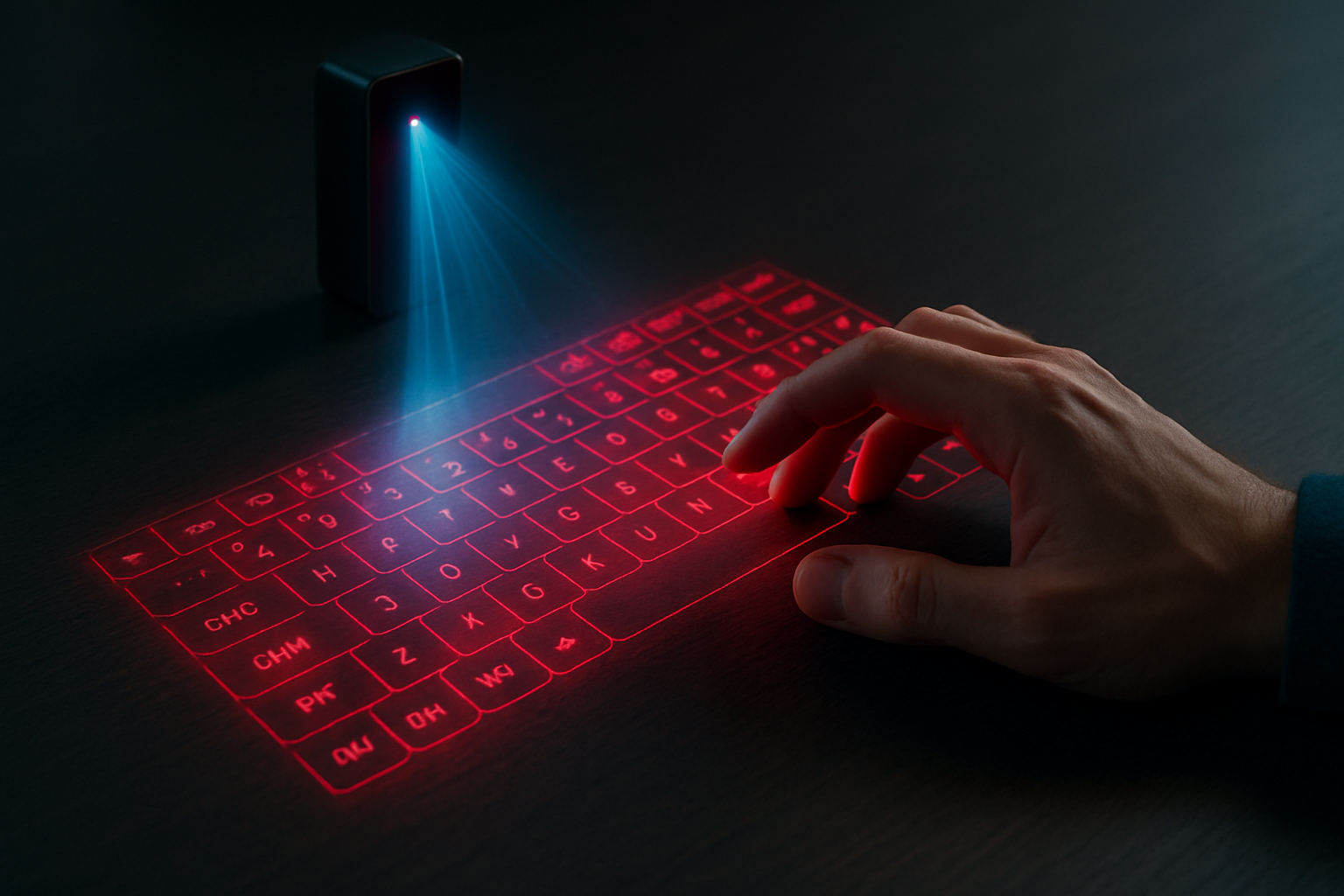Holographic Keyboards: Typing in Thin Air
In an era where technology constantly pushes the boundaries of what's possible, holographic keyboards emerge as a fascinating frontier. These futuristic input devices promise to revolutionize how we interact with our digital world, offering a blend of sci-fi fantasy and cutting-edge innovation. As we dive into the realm of holographic keyboards, we'll explore their current state, potential applications, and the challenges they face in becoming a mainstream reality.

The Science Behind the Magic
At the heart of holographic keyboard technology lies a clever combination of optics and sensors. Most designs use a laser projector to cast the image of a keyboard onto a surface. Infrared sensors then detect the position of your fingers, translating these movements into keystrokes. Some advanced models even incorporate haptic feedback, using ultrasound waves to create the sensation of pressing physical keys.
The technology isn’t entirely new - patents for similar concepts date back to the early 2000s. However, recent advancements in miniaturization and sensor technology have breathed new life into the idea, making it more feasible than ever before.
Current State of the Technology
While fully functional holographic keyboards aren’t yet commonplace, several companies are making significant strides in the field. Celluon, a South Korean tech firm, has been at the forefront with its line of laser projection keyboards. These devices, while not true holograms, project a laser outline of keys onto a flat surface and use infrared to detect finger movements.
More recently, startups like HoloKeys and VKB (Virtual Keyboard) have been pushing the envelope, working on true holographic models that float in midair. These prototypes use advanced light field technology to create three-dimensional images that can be interacted with directly.
Potential Applications
The appeal of holographic keyboards extends far beyond mere novelty. In a world increasingly dominated by mobile computing, these devices offer a potential solution to the age-old problem of typing on small screens. Imagine pulling out your smartphone and instantly having a full-sized keyboard at your disposal, without the need to carry any additional hardware.
Healthcare is another sector that could benefit greatly from this technology. In sterile environments like operating rooms, where physical keyboards can harbor bacteria, holographic interfaces could provide a touchless alternative. Similarly, public spaces like libraries or internet cafes could offer hygienic, easily sanitized input options.
Challenges and Limitations
Despite their promise, holographic keyboards face several hurdles on their path to widespread adoption. One of the most significant challenges is providing accurate tactile feedback. Without the physical resistance of keys, typing can feel unnatural and lead to increased errors. Some companies are experimenting with haptic feedback systems, but replicating the feel of a physical keyboard remains a significant challenge.
Another issue is environmental interference. Current optical-based systems can be affected by ambient light conditions, potentially limiting their usefulness in outdoor settings. Additionally, the need for a flat projection surface can restrict mobility and usability in certain scenarios.
The Future of Input
As holographic keyboard technology continues to evolve, we’re likely to see it converge with other emerging technologies. Augmented reality (AR) presents particularly exciting possibilities. Imagine AR glasses that not only display a virtual keyboard but can project it onto any surface - or even into thin air - allowing for truly mobile, adaptable input.
Some researchers are even exploring the possibility of brain-computer interfaces that could eventually render physical input methods obsolete. While such technology is still in its infancy, it represents the logical endpoint of the trend towards more intuitive, seamless human-computer interaction.
Market Impact and Pricing
The market for holographic keyboards is still in its early stages, with most current offerings falling into the novelty or prototype category. Prices for laser-projected keyboards, the closest commercially available alternative, typically range from $50 to $200. True holographic models, when they become available, are likely to command premium prices initially, possibly in the $300 to $500 range.
As for market impact, while holographic keyboards are unlikely to replace traditional input methods entirely in the near future, they could carve out a significant niche in specific sectors. The global virtual keyboard market is projected to reach $3.5 billion by 2028, with holographic technologies expected to play an increasingly important role.
In conclusion, holographic keyboards represent a tantalizing glimpse into the future of human-computer interaction. While challenges remain, the potential benefits in terms of portability, hygiene, and adaptability make this a technology worth watching. As we continue to push the boundaries of what’s possible in computing, the dream of typing in thin air may soon become a tangible reality.





